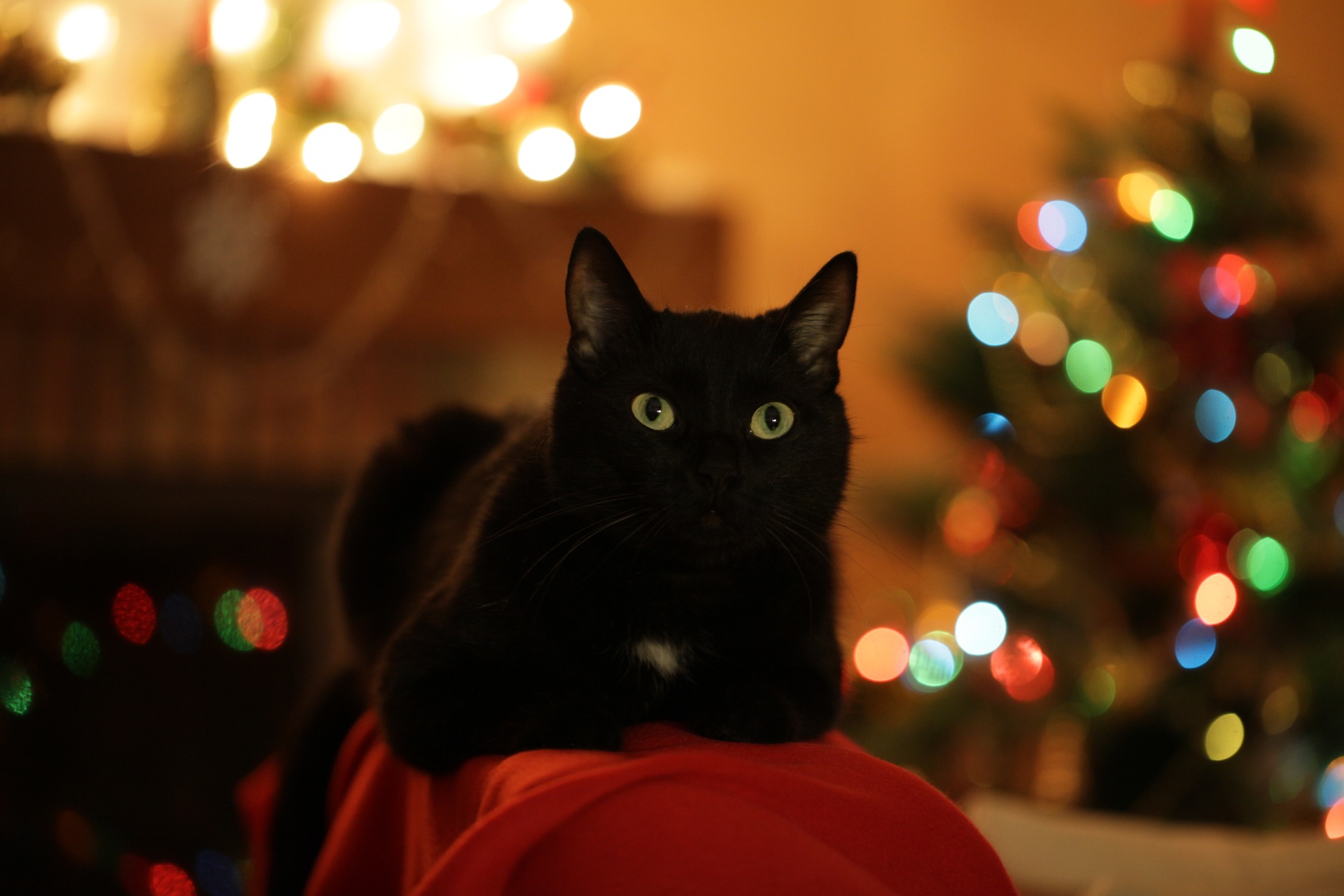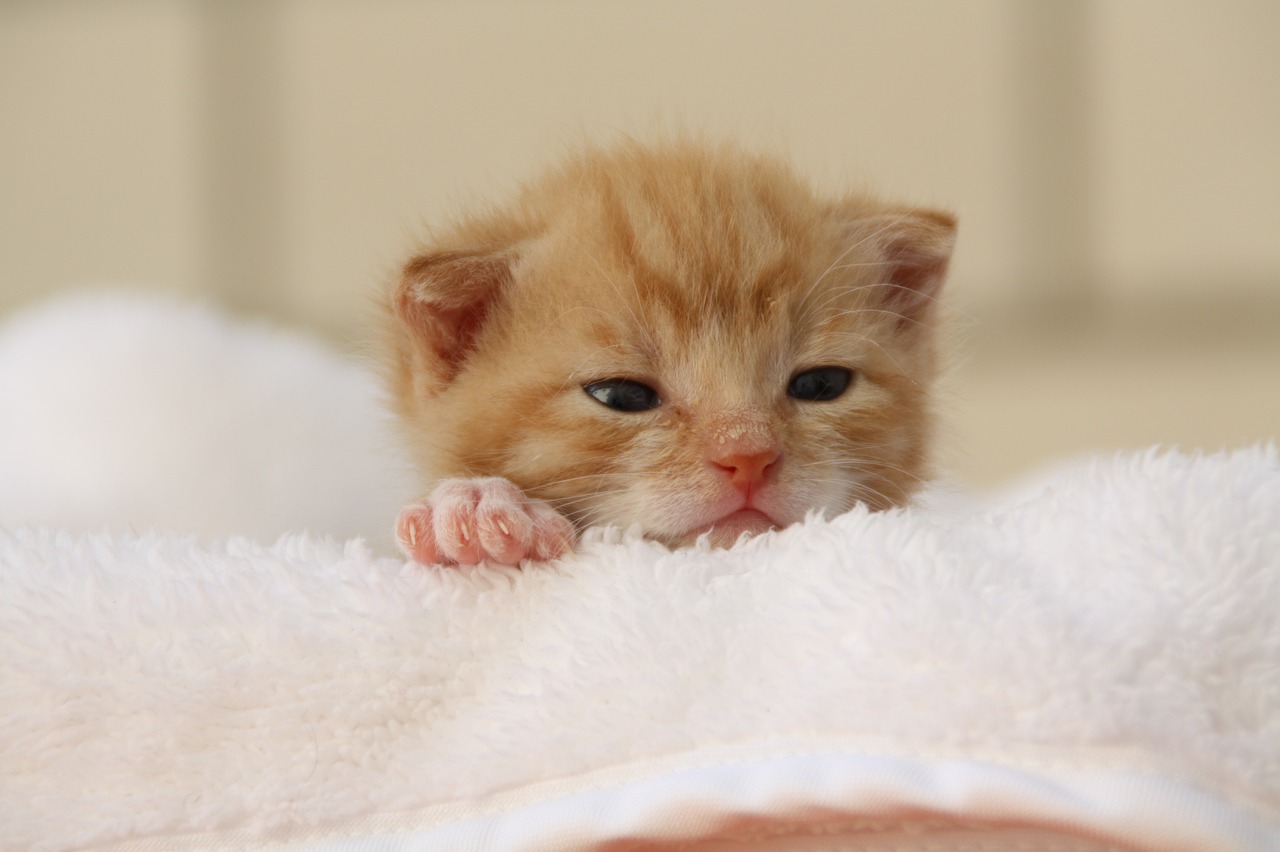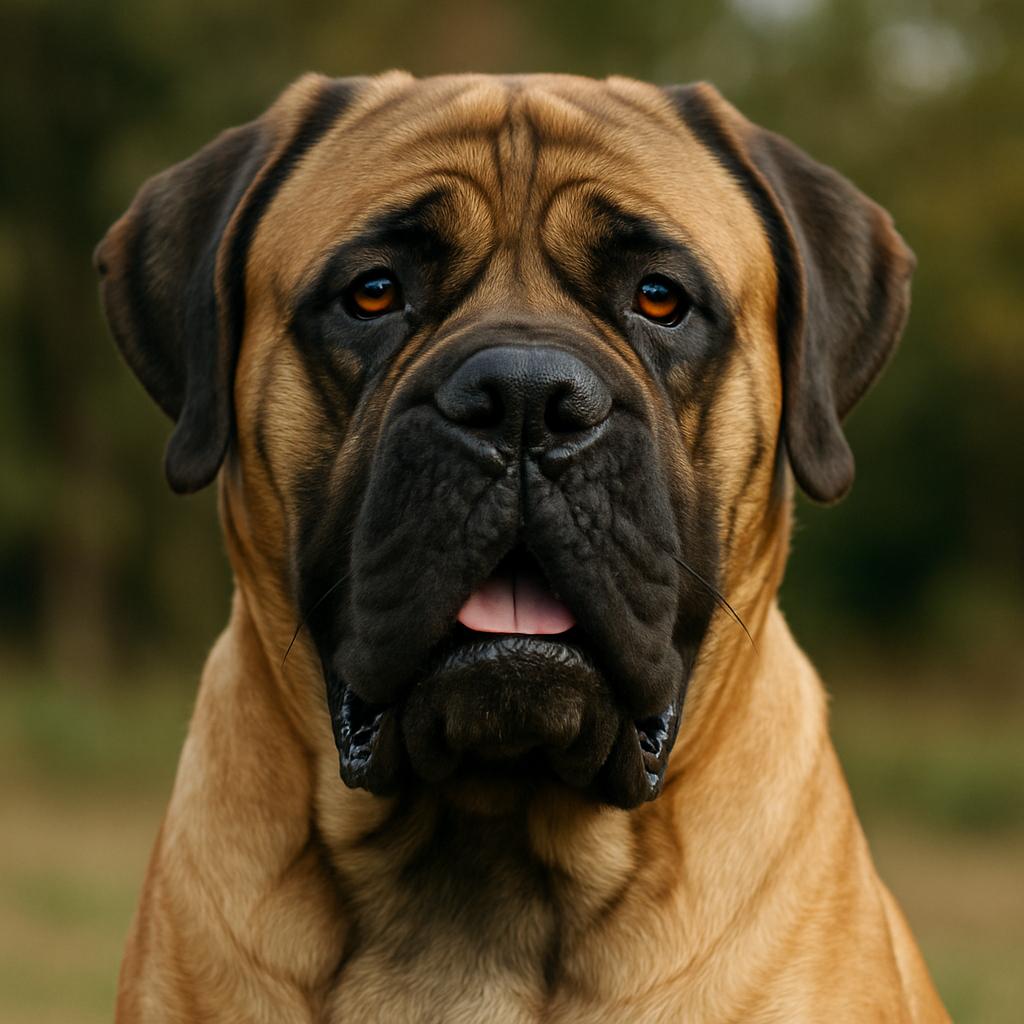
Mastiff: A very sweet, massive and imposing dog
The origin of the Mastiff dog breed is not very clear. It was thought that, like all Molosser breeds, it descended from the ancient and now extinct Tibetan Mastiff, but this has been almost completely disproved. Another theory suggests that it is a direct descendant of the Molossus, which arrived in England from Epirus and Macedonia on merchant ships.
On the other hand, we know that this breed was present in England as early as 500 years before the Roman occupation, which took place under Caesar in 55 BC. These legendary Molossers fought alongside the Celts against Caesar's legions when they invaded the British Isles. They were dogs of exceptional size, so much so that they were called “lion dogs”.
After conquering the British Isles, the Romans brought these English dogs with them and called them “British pugnaces”. Once in Rome, these dogs were used in arenas in spectacular fights against wild animals, bulls and even men. The Mastiff is a direct descendant of these fighting dogs.
In ancient times, this breed performed various tasks, such as war dogs alongside humans, hunting dogs for large game, during public fights and, above all, as guard dogs for the ancient castles of the English nobility.
There is a famous episode involving a knight, Sir Peirs Leig, who fell to the ground, seriously wounded, during the Battle of Agincourt in 1415 and was protected for many hours by his female Mastiff until help arrived. Tradition has it that the entire line of mastiffs at Lyme Hall Castle descended from this female, a genetic continuity recorded until the 19th century.
Even in the Middle Ages, this dog was used in England to entertain the people during public fights against bears and bulls. In the sixteenth century, special arenas were built around London. This terrible career was only interrupted in 1835, when the British Government banned these ferocious fights.
Almost at the same time in England, the Old English Mastiff began to be bred and, after a few years, targeted crossbreeding with the smooth-coated St. Bernard was carried out, which brought greater balance and gentleness to its character.
Its name derives from the ancient Saxon term “masty”, which literally means powerful. A phrase by a Welsh cynologist referring to the Mastiff has remained famous: “The lion is to the cat as the Mastiff is to the dog”.
This breed has been threatened with extinction several times, especially during the two world wars. In fact, few people could afford to feed such a large dog at that time, but it was always recovered with considerable effort from the few surviving specimens. This was especially true after the Second World War, when, thanks to support from Canada and the USA, where some specimens had survived, England was able to resume breeding.
Crossed with the Old English Bulldog in the mid-19th century, it gave rise to the Bullmastiff.
Character of the Mastiff dog breed
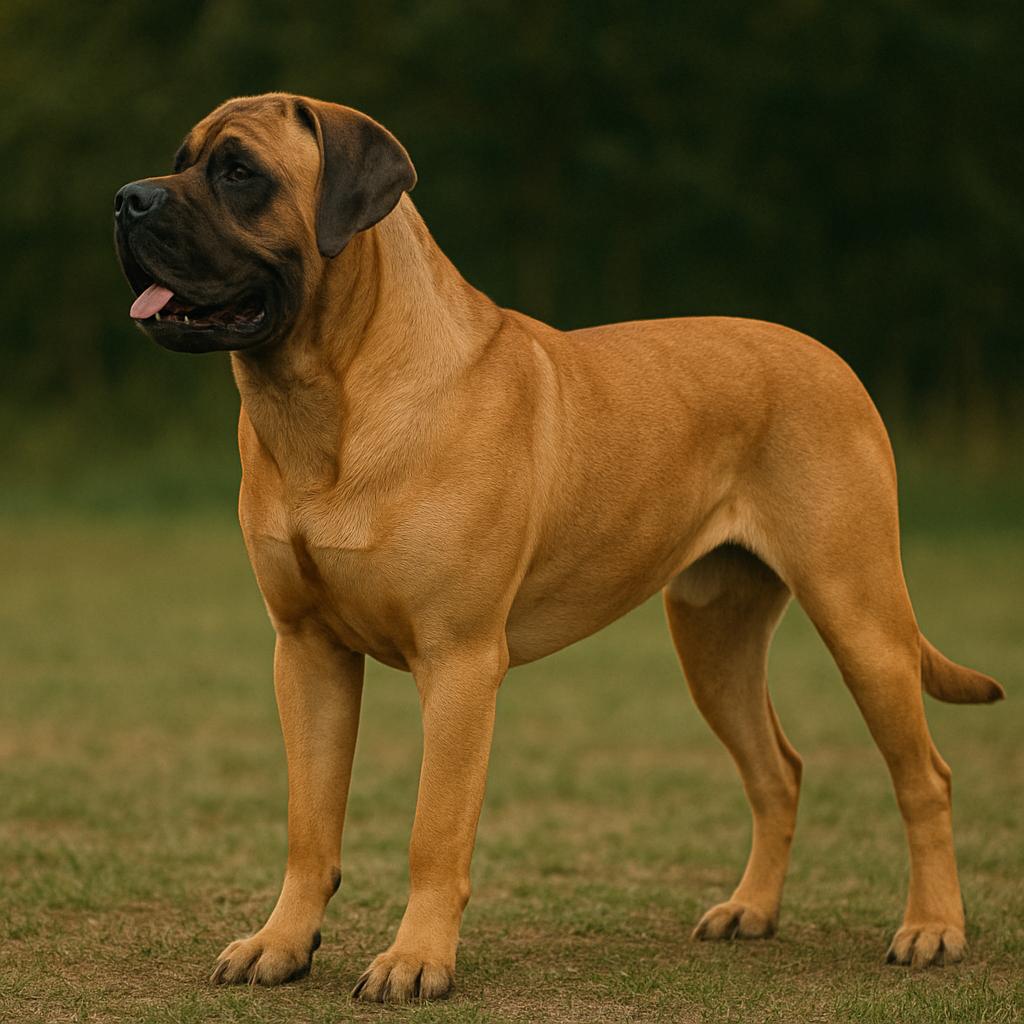
It is an excellent companion for the whole family and adapts very well to living indoors, provided it has enough space given its size. It is docile with children and tolerates even the most boisterous play. It is not a dog to be confined to the garden, but wants to share experiences with its humans, find space with them on the sofa or accompany them outside the home. It needs to have someone it can rely on close by.
With proper socialisation, it lives peacefully with other dogs and even with other animals. Being primarily a guard dog, it is rather reserved with strangers, but it is very well-balanced and always remains in control, attacking an assailant only in cases of extreme danger to its loved ones.
Training should begin immediately when they are puppies. Given their docility, it is easy to train them well, and they will do everything to please their owner. However, they must be taught sociability and obedience right away, especially given the size they will soon reach. They are creatures of habit and prefer a familiar and stable routine.
Today, it is one of the breeds successfully used in pet therapy, thanks to its balanced character and gentleness, which seem to have therapeutic effects.
It is a noble dog both in appearance and behaviour, which is always discreet, never intrusive or exuberant in its displays of affection.
Even at home, it will never be a hindrance, partly because it is quite indolent within the home, preferring to doze on rugs and sofas. The Mastiff does not form a special bond with one person in the family, but wants to be part of it in every way, establishing an emotional bond with everyone.
Appearance of the Mastiff dog breed
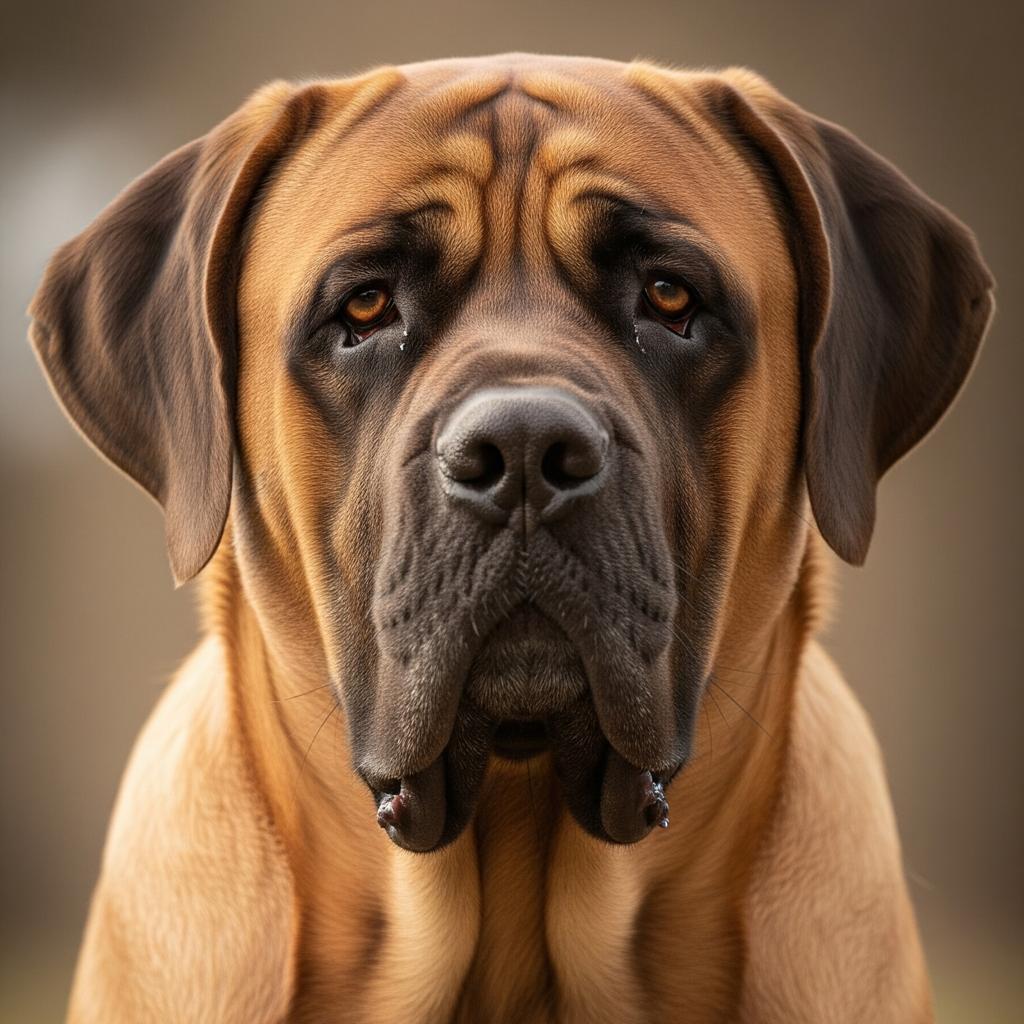
The tail hangs down when the dog is at rest and is carried slightly curved when excited. This breed generally has a powerful, well-developed jaw with a dewlap that tends to hang down below the neck due to the abundance of skin.
The head is imposing and square with a massive, powerful skull, which is broad between the ears, flat but rich in wrinkles when the dog is alert. The muzzle is short and broad under the eyes. The ears are small, fine, set high and close to the cheeks. The eyes are small and hazel, as dark as possible. The nose is very broad, with well-opened nostrils and black in colour.
The coat is short and dense, close to the body and highlighting the muscles. The coat colour ranges from fawn, in shades of apricot or silver, and may be brindled. On the muzzle, ears and around the eyes there is a typical dark mask.
Care and health of the Mastiff breed
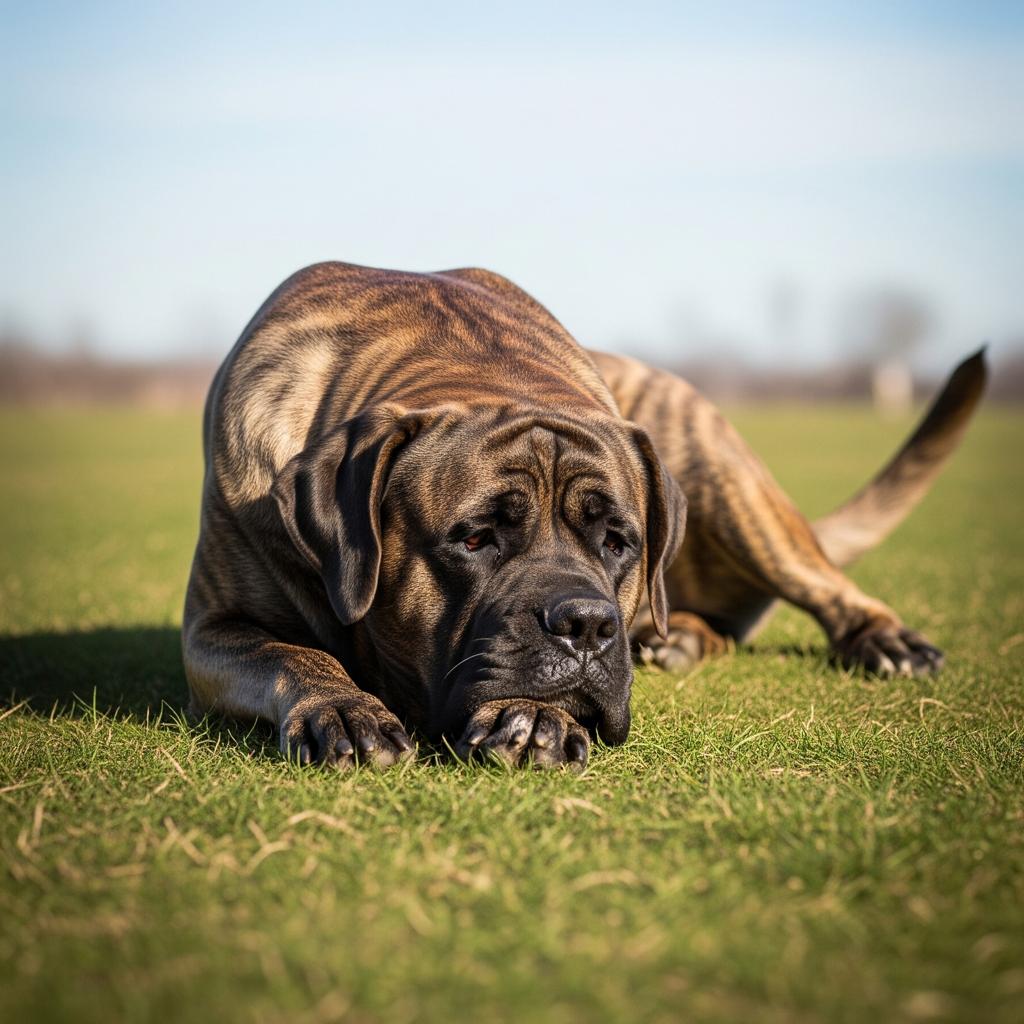
The Mastiff breed is considered very robust and prone to few hereditary diseases. However, like many dogs of this size, it can suffer from hip dysplasia and stomach torsion. It also belongs to the brachycephalic category, which means that due to the flattened shape of its nose, it can suffer from brachycephalic syndrome, although the incidence is lower than in small dogs belonging to the same category.
It is also prone to heart problems, obesity, allergies, hypothyroidism and retinal atrophy. Unfortunately, it is not a very long-lived dog, reaching a maximum age of 11 years, but it is more likely that it will not reach 10.
Mastiffs suffer greatly from the heat, so they need plenty of fresh water and shelter on hot days.
It is a dog with a large appetite and is not particularly fond of exercise; it therefore needs a balanced and controlled diet and should be given daily exercise. It is surprising how much a Mastiff puppy grows; between 5 and 8 months, it can gain 10 kilograms per month.
As for coat care, this requires little effort; brushing once a week is sufficient. The folds of skin require special attention, as they can harbour dirt and parasites.

